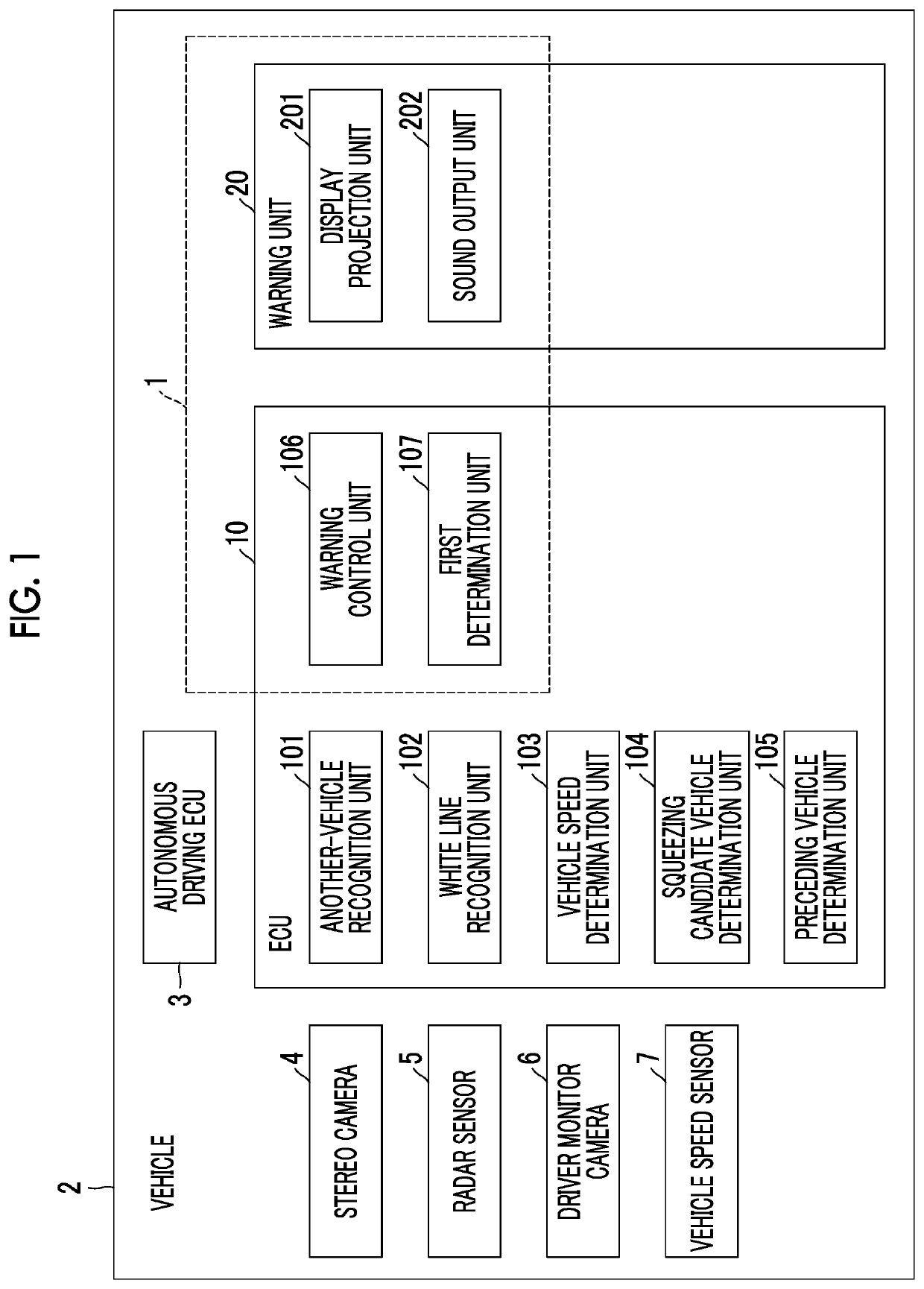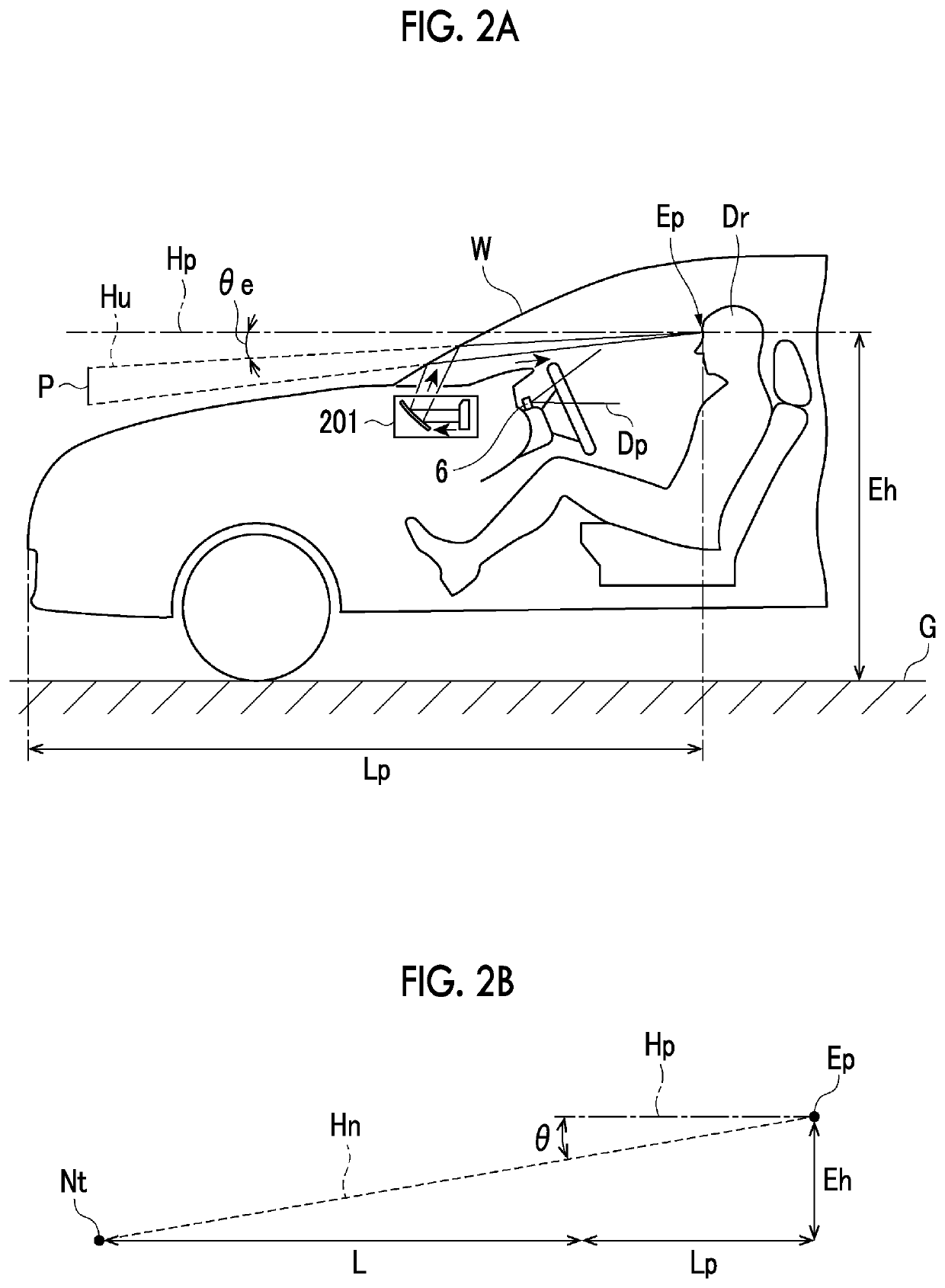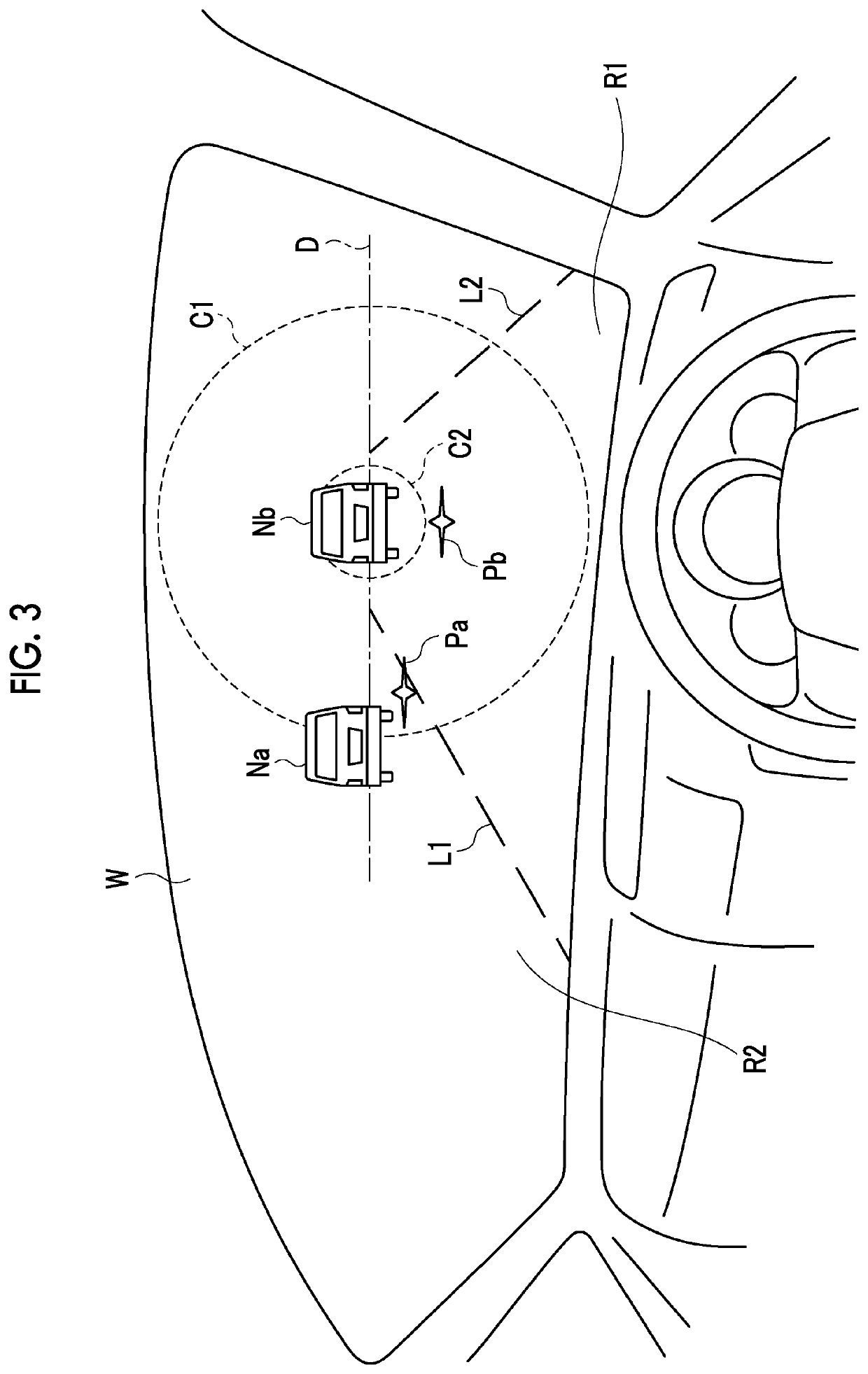Vehicle system and vehicle
a vehicle system and vehicle technology, applied in the field of vehicle systems and vehicles, can solve the problems of reduced speed of driver's response to a change in the traffic environment, driver's overconfidence in autonomous driving, and the inability of the driver to respond or feel troublesome to react to a light stimulus
- Summary
- Abstract
- Description
- Claims
- Application Information
AI Technical Summary
Benefits of technology
Problems solved by technology
Method used
Image
Examples
first embodiment
[Outline of Vehicle System 1]
[0042]FIG. 1 is a functional block diagram of a vehicle 2 including a vehicle system 1 according to a first embodiment. The vehicle system 1 is mounted on the vehicle 2 such as a passenger car. The vehicle 2 is a vehicle capable of autonomous driving. Autonomous driving refers to vehicle control in which the vehicle 2 is autonomously driven along a target route that is set in advance. During autonomous driving, the vehicle 2 travels autonomously with no need for the driver to perform the driving operation. The target route is a route on the map on which the vehicle 2 will travel in the autonomous driving mode.
[0043]The vehicle system 1 presents a light stimulus to the driver of the vehicle 2 using the head-up display of the vehicle 2 when a change in the traffic environment is detected ahead of the vehicle 2 during autonomous driving. The traffic environment includes the traveling situation of the vehicles around the vehicle 2, the signal lighting situat...
second embodiment
[0108]A vehicle system 1A according to a second embodiment is different from the vehicle system 1 according to the first embodiment in that a vibration generation unit 203 is provided instead of the sound output unit 202. The other components are the same as those of the first embodiment. In the description of the vehicle system 1A, the description similar to that of the vehicle system 1 is omitted.
[0109]FIG. 10 is a functional block diagram of the vehicle 2 having the vehicle system 1A according to the second embodiment. As shown in FIG. 10, the difference in the configuration between the vehicle system 1A and the vehicle system 1 is that the vehicle system 1A does not include the sound output unit 202 but includes the vibration generation unit 203. The other configuration is the same as that of the vehicle system 1.
[0110]The vibration generation unit 203 is a device that generates a vibration. For example, the vibration generation unit 203 has a weight having a biased center of gr...
third embodiment
[0113]A vehicle system 1B according to a third embodiment is different from the vehicle system 1 according to the first embodiment in that a second determination unit 108 and a vibration generation unit. 203 are provided and in the processing content of a warning control unit 106B. The other components and processing content are the same as those of the first embodiment. In the description of the vehicle system 1B, the description similar to that of the vehicle systems 1 and 1A is omitted.
[0114]FIG. 11 is a functional block diagram of the vehicle 2 having the vehicle system 1B according to the third embodiment. As shown in FIG. 11, the difference in the configuration between the vehicle system 1B and the vehicle system 1 is that the vehicle system 1B includes the warning control unit 106B, the function of which is partially different from that of the warning control unit 106, the second determination unit 108, and the vibration generation unit 203. The other configuration is the sam...
PUM
 Login to View More
Login to View More Abstract
Description
Claims
Application Information
 Login to View More
Login to View More - R&D
- Intellectual Property
- Life Sciences
- Materials
- Tech Scout
- Unparalleled Data Quality
- Higher Quality Content
- 60% Fewer Hallucinations
Browse by: Latest US Patents, China's latest patents, Technical Efficacy Thesaurus, Application Domain, Technology Topic, Popular Technical Reports.
© 2025 PatSnap. All rights reserved.Legal|Privacy policy|Modern Slavery Act Transparency Statement|Sitemap|About US| Contact US: help@patsnap.com



